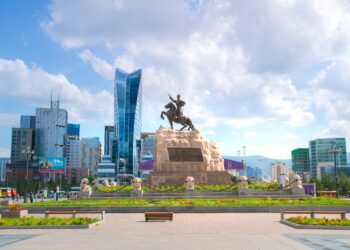Vaccines and falling infection rates may suggest that a return to normalcy is just around the corner, but we’re not out of the woods yet.
With many countries, including the United States, experiencing successful vaccine rollouts, and Covid-19 infection rates declining significantly in others, such as the UK, you may be tempted to get back to traveling for pleasure as soon as possible. Nevertheless, risks of infection—and of infecting others—persist.
Here are 10 tips for safe pandemic travel as the uncertainty continues:
- Know the COVID-19 Rate Where You Live
There are a few valuable reasons to know the local infection rate in your city or region. For instance, if you’re planning to travel by plane from an area with many COVID-19 cases, the odds will be higher that a passenger near you will have the disease, which would then raise your infection risk. In this scenario, you’re also more likely to infect any family you’re planning to visit.
- Assess COVID-19 Rates at Your Destination
Tracking the infection rate at your destination is also important. If you’re heading to a location that’s red-hot with COVID-19, your chances of becoming ill there are higher. And with the hospitals in some areas already exceeding capacity, there’s a chance you wouldn’t be able to get adequate care if you do get sick.
You can find an area’s test positivity rate (a key measure of virus circulation levels) on the website of its local public health department. For trips outside the United States, check the State Department website to determine what the virus rates are and even whether Americans are banned from entry, as they are in many European countries.
- Consider Your (and Your Host’s) Health Situation
Are you or is anyone you’re traveling with at high risk for severe COVID-19 consequences? Older adults and people with underlying conditions, including type 2 diabetes, kidney disease, heart conditions, cancer, and obesity, are more likely to become seriously ill and require hospitalization if they catch the coronavirus.
If you fall into one of these categories, flying on a plane or going to a crowded place with many other vacationers may be especially risky. But driving to an isolated vacation spot could be okay.
- Test Before, During, and Even After Your Trip
Whether or not it helps you avoid quarantine, you may want to take a coronavirus test in the days before you leave, if one is available to you. Getting a negative result will reduce the odds you’ll unknowingly bring the virus to your destination.
Remember that it can take a few days or longer to get results from a PCR test, so plan ahead. Some testing sites require appointments, which may be hard to get at the last minute, especially around the holidays.
As a further precaution, it’s also a good idea to self-isolate for one to two weeks before beginning your journey.
- Decide on Your Mode of Travel
Experts consider driving to be the safest form of transportation now, especially if the destination can be reached within a day, because this substantially limits your interactions with others.
Flying can also be relatively safe, so long as proper precautions are taken. Your airline should ensure its plane is thoroughly cleaned and work to maintain sufficient distance between passengers during the boarding and disembarking process.
Traveling by bus likely requires extra vigilance, as the ventilation systems (an important way that microbes are removed from the air) may not be as good as those on planes.
- Be Choosy About Where You Stay
Fortunately, many hotel chains are paying special attention to sanitizing guest rooms and common areas. Some are also “buffering” rooms, keeping them unoccupied for a day or two between guests to allow any virus in the air sufficient time to diminish. If you decide to stay in a hotel, experts suggest calling beforehand to ask what procedures they are following.
Many travelers are choosing to rent an entire house from sites like Vrbo or Airbnb so they won’t have to worry about passing people in the lobby or stepping into a crowded elevator. But because homes are owned by private individuals, the level of sanitation before your arrival will vary considerably.
No matter where you stay, as soon as you get to your lodging open any operational windows for a little while. This boosts ventilation by bringing in fresh air. Even if the place looks spotless, disinfect all high-touch surfaces yourself, especially light switches, sink faucet handles, doorknobs, and remote controls.
- Cook or Bring in Takeout
One of the risks of leaving home is what to do about all the meals you’ll be eating. Eating at an outdoor restaurant is relatively safe. Nevertheless, even if you’re going to a warmer climate, you can’t count on eating all meals alfresco. Be sure every restaurant is following proper protocol, such as ensuring that staff and wandering patrons are wearing masks and that tables are set far enough apart to allow for social distancing. One sign an establishment is taking the virus seriously is when it goes above and beyond, such as by ditching reusable menus for digital ones.
- Don’t Let Your Guard Down
While on vacation it’s easy to feel like the limitations of your regular life don’t apply. But there are no magical protections that keep the virus at bay. It’s important to follow general CDC guidance at all times, Grant stresses, including washing hands regularly, avoiding touching your face as much as possible, keeping 6 (or ideally more) feet of distance between yourself and others, and, crucially, wearing a mask in all public settings.
- Be Smart About Each Activity
There may be activities you always love to do on vacation, but it may not be wise to do them now. Instead, find activities that keep you outside and distanced from others. Some venues are offering creative, safe entertainment, such as drive-in movies and concerts.
If you’re not sure if an activity is safe, check out the Brown Alpert Medical School’s interactive COVID-19 risk app. You input information about your planned activity and it spits out the risk based on virus spread where you are.
- Reevaluate at Every Turn
Book lodging and activities that you can cancel, even at the last minute. Should you or someone you’re planning to travel with develop symptoms or come into contact with someone with COVID-19, nix the trip and stay home.
While away, constantly reevaluate everything, shifting plans when necessary. If you’re at a restaurant and notice the waitstaff wearing masks around their necks instead of over their mouths and noses, for instance, get up and leave.
Remember that the pandemic is ongoing and while we are all eager to head off traveling again, the above advice could save your own life and those of others. Safe travels!












